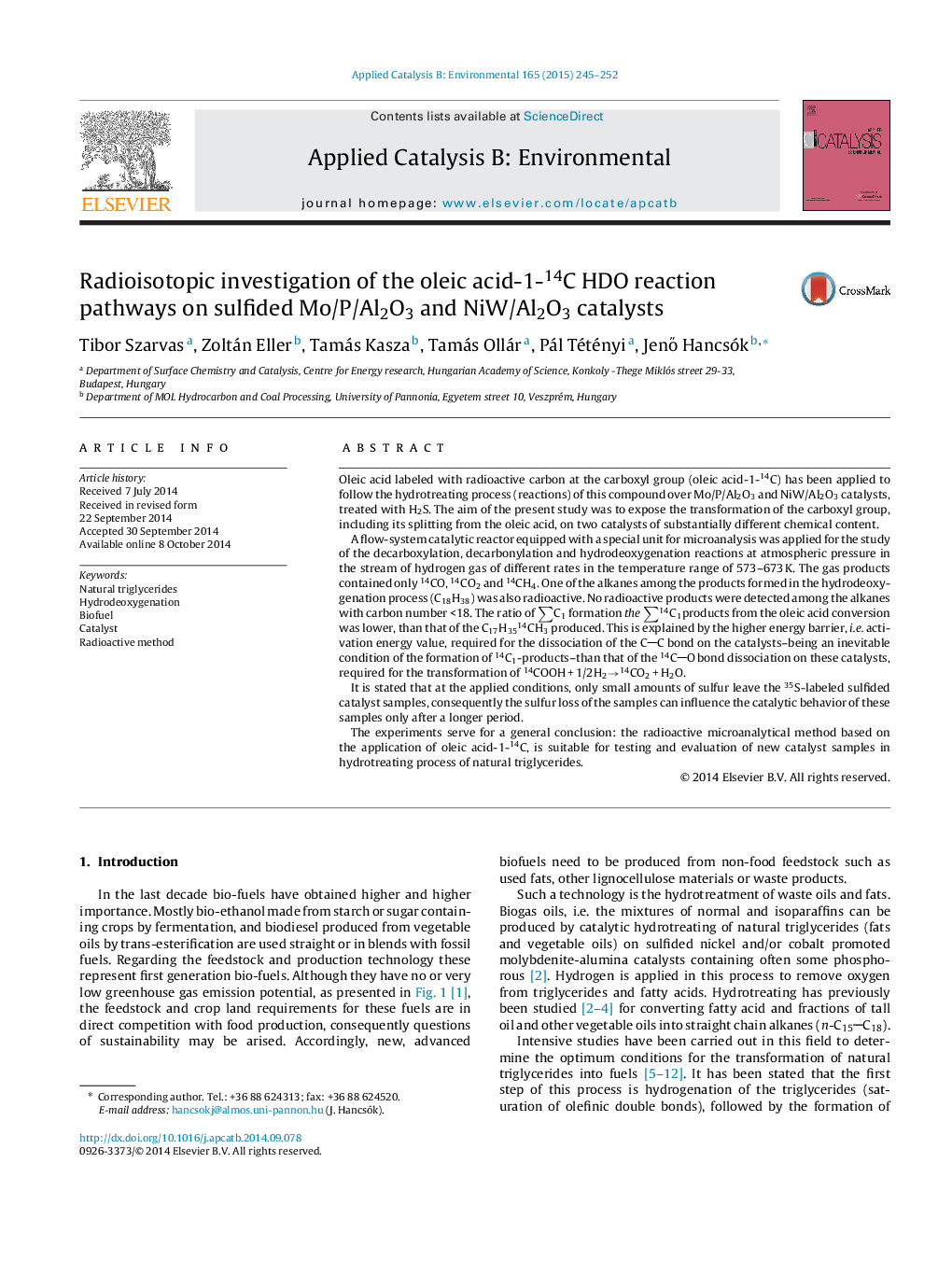| کد مقاله | کد نشریه | سال انتشار | مقاله انگلیسی | نسخه تمام متن |
|---|---|---|---|---|
| 45554 | 46416 | 2015 | 8 صفحه PDF | دانلود رایگان |

• Only CO, CO2 and CH4 were radioactive during the deoxygenation of oleic acid-1-14C.
• The radioactive C18H38 alkane was formed only by hydrodeoxygenation pathway.
• 14CO and 14CO2 were converted partly into 14CH4.
• The applied radioactive method is suitable for the testing of catalyst samples.
• This method is suitable for optimization of hydrotreating of natural triglycerides.
Oleic acid labeled with radioactive carbon at the carboxyl group (oleic acid-1-14C) has been applied to follow the hydrotreating process (reactions) of this compound over Mo/P/Al2O3 and NiW/Al2O3 catalysts, treated with H2S. The aim of the present study was to expose the transformation of the carboxyl group, including its splitting from the oleic acid, on two catalysts of substantially different chemical content.A flow-system catalytic reactor equipped with a special unit for microanalysis was applied for the study of the decarboxylation, decarbonylation and hydrodeoxygenation reactions at atmospheric pressure in the stream of hydrogen gas of different rates in the temperature range of 573–673 K. The gas products contained only 14CO, 14CO2 and 14CH4. One of the alkanes among the products formed in the hydrodeoxygenation process (C18H38) was also radioactive. No radioactive products were detected among the alkanes with carbon number <18. The ratio of ∑C1 formation the ∑14C1products from the oleic acid conversion was lower, than that of the C17H3514CH3 produced. This is explained by the higher energy barrier, i.e. activation energy value, required for the dissociation of the CC bond on the catalysts–being an inevitable condition of the formation of 14C1-products–than that of the 14CO bond dissociation on these catalysts, required for the transformation of 14COOH + 1/2H2→14CO2 + H2O.It is stated that at the applied conditions, only small amounts of sulfur leave the 35S-labeled sulfided catalyst samples, consequently the sulfur loss of the samples can influence the catalytic behavior of these samples only after a longer period.The experiments serve for a general conclusion: the radioactive microanalytical method based on the application of oleic acid-1-14C, is suitable for testing and evaluation of new catalyst samples in hydrotreating process of natural triglycerides.
Figure optionsDownload as PowerPoint slide
Journal: Applied Catalysis B: Environmental - Volume 165, April 2015, Pages 245–252